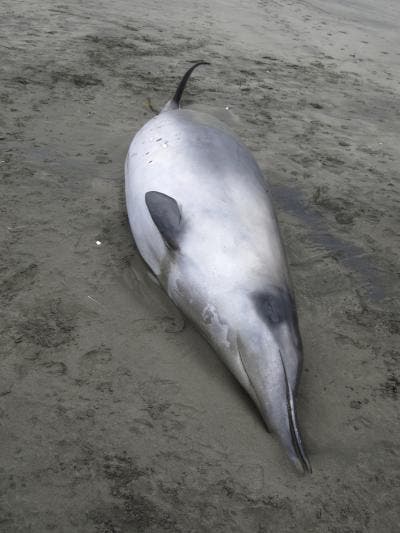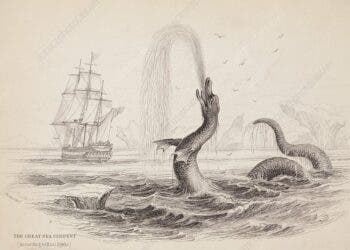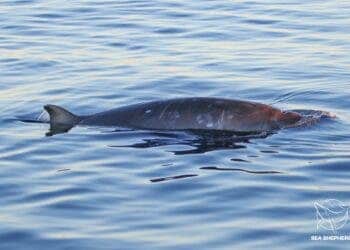
The first recollection of the spade-toothed whale came in 1872, but no actual proof of its existence has been found ever since. Recently, biologists were dumbstruck when they heard not one, but two specimens of the highly elusive whale species beached on the shores of New Zealand. Unfortunately the two whales, mother and cub, died however scientists have learned a great deal about this beautiful whale.
Like I said, no one previously has ever seen a live specimen of the spade-toothed whale, and if they had they probably mistook it for some other species. A partial skull found in New Zealand in the 1950′s and one in Chile in 1986 provided hope for biologists that the species wasn’t extinct. In 2010, two whole specimens, not just bones or shards, were found stranded on Opape Beach in New Zealand. The adult female was 5.3m long and the young male was 3.5m long.
Initially biologists thought the specimens were of the common Gray’s beaked whale (Mesoplodon grayi), however after subsequent DNA analysis by a team of researchers led by Kirsten Thompson from the School of Biological Sciences at the University of Auckland, it was found that these were never-before-seen spade-toothed whales. A remarkable discovery!

But why so elusive? Well, like the 21 other known species of the Ziphiidae family, these whales have the ability to dive down to exceptionally deep areas of the ocean in search of squid and other deep-sea fish. Their relatives can dive to more than 800m below the surface for up to 87 minutes, and most likely the spade-toothed whale can reach the same feats if not more.
”It may be that they are simply an offshore species that lives and dies in the deep ocean waters and only rarely wash ashore. New Zealand is surrounded by massive oceans. There is a lot of marine life that remains unknown to us,” Rochelle Constantine from the University of Auckland said.
Having seen its flesh for the first time, the researchers were also able to assess some physiological discrepancies from other whale species and unique features. For instance, the spade-toothed whale’s colouration of the rostrum, or ‘beak, is dark gray or black, rather than the white of the adult Gray’s beaked whale. It also has a dark eye-patch, white belly and dark flippers.
At this time it’s possible for scientists to tell how many such specimens are currently left alive in the deep waters of the pacific; what’s important, however, is that they still exist.
Findings were reported in the journal Current Biology.






